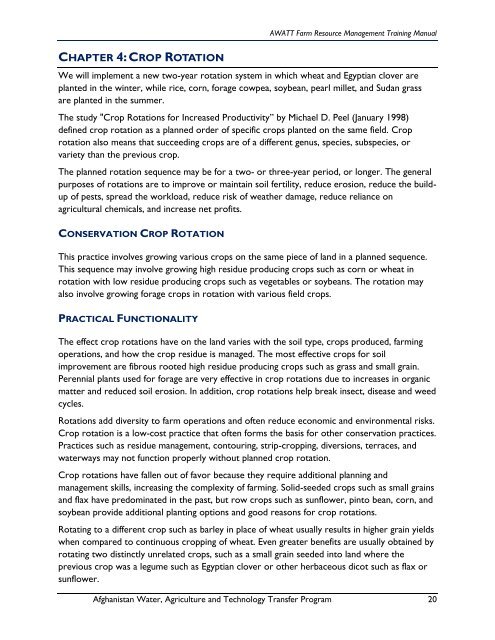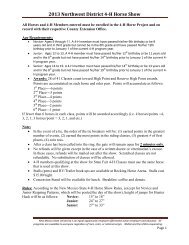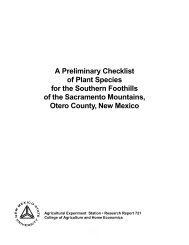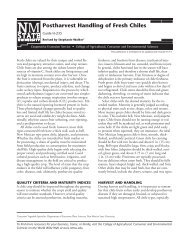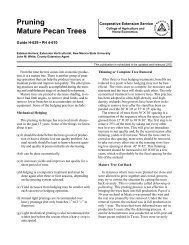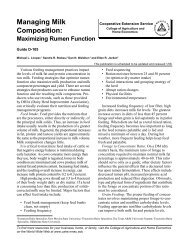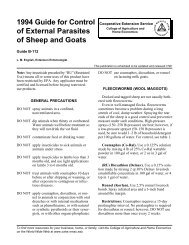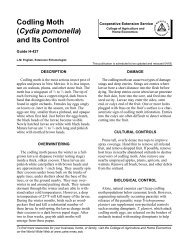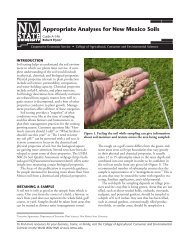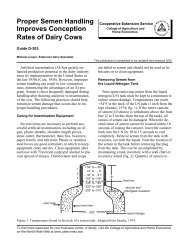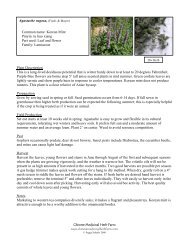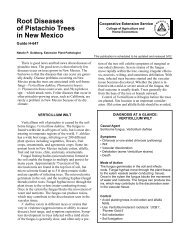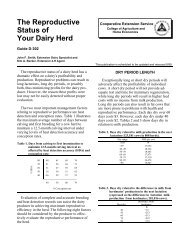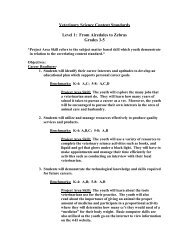Farm Resource Management (FRM) - College of Agricultural ...
Farm Resource Management (FRM) - College of Agricultural ...
Farm Resource Management (FRM) - College of Agricultural ...
Create successful ePaper yourself
Turn your PDF publications into a flip-book with our unique Google optimized e-Paper software.
AWATT <strong>Farm</strong> <strong>Resource</strong> <strong>Management</strong> Training ManualCHAPTER 4: CROP ROTATIONWe will implement a new two-year rotation system in which wheat and Egyptian clover areplanted in the winter, while rice, corn, forage cowpea, soybean, pearl millet, and Sudan grassare planted in the summer.The study "Crop Rotations for Increased Productivity‖ by Michael D. Peel (January 1998)defined crop rotation as a planned order <strong>of</strong> specific crops planted on the same field. Croprotation also means that succeeding crops are <strong>of</strong> a different genus, species, subspecies, orvariety than the previous crop.The planned rotation sequence may be for a two- or three-year period, or longer. The generalpurposes <strong>of</strong> rotations are to improve or maintain soil fertility, reduce erosion, reduce the buildup<strong>of</strong> pests, spread the workload, reduce risk <strong>of</strong> weather damage, reduce reliance onagricultural chemicals, and increase net pr<strong>of</strong>its.CONSERVATION CROP ROTATIONThis practice involves growing various crops on the same piece <strong>of</strong> land in a planned sequence.This sequence may involve growing high residue producing crops such as corn or wheat inrotation with low residue producing crops such as vegetables or soybeans. The rotation mayalso involve growing forage crops in rotation with various field crops.PRACTICAL FUNCTIONALITYThe effect crop rotations have on the land varies with the soil type, crops produced, farmingoperations, and how the crop residue is managed. The most effective crops for soilimprovement are fibrous rooted high residue producing crops such as grass and small grain.Perennial plants used for forage are very effective in crop rotations due to increases in organicmatter and reduced soil erosion. In addition, crop rotations help break insect, disease and weedcycles.Rotations add diversity to farm operations and <strong>of</strong>ten reduce economic and environmental risks.Crop rotation is a low-cost practice that <strong>of</strong>ten forms the basis for other conservation practices.Practices such as residue management, contouring, strip-cropping, diversions, terraces, andwaterways may not function properly without planned crop rotation.Crop rotations have fallen out <strong>of</strong> favor because they require additional planning andmanagement skills, increasing the complexity <strong>of</strong> farming. Solid-seeded crops such as small grainsand flax have predominated in the past, but row crops such as sunflower, pinto bean, corn, andsoybean provide additional planting options and good reasons for crop rotations.Rotating to a different crop such as barley in place <strong>of</strong> wheat usually results in higher grain yieldswhen compared to continuous cropping <strong>of</strong> wheat. Even greater benefits are usually obtained byrotating two distinctly unrelated crops, such as a small grain seeded into land where theprevious crop was a legume such as Egyptian clover or other herbaceous dicot such as flax orsunflower.Afghanistan Water, Agriculture and Technology Transfer Program 20


